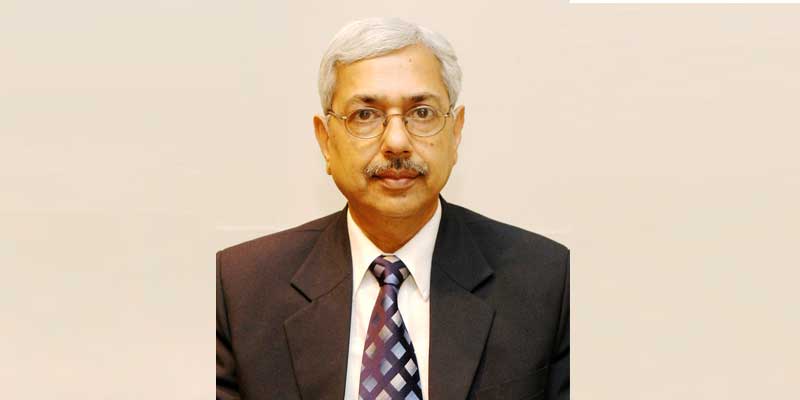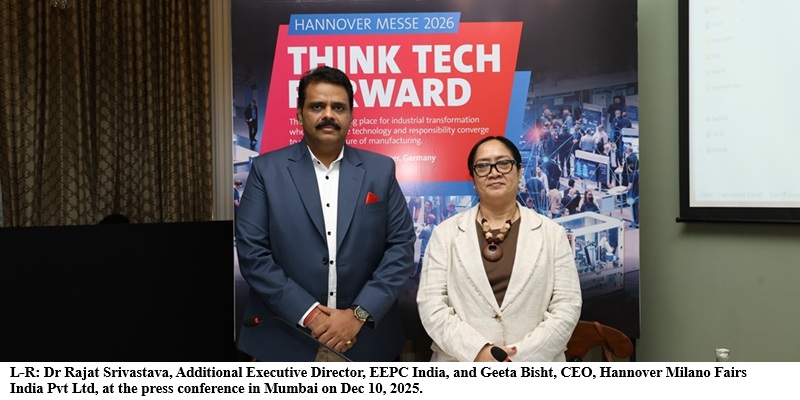Schedule a Call Back
Human will remain the master even in the factories of the future
 Interviews
Interviews- Apr 28,23

The Automation Industry Association (AIA) has set up the initiative ‘Samarth Udyog’ in collaboration with the Indian Institute of Technology, Delhi (IITD) and the Ministry of Heavy Industry. SAMARTH stands for “Smart Advanced Manufacturing and Transformation Hub’. The initiative aims to empower and enable the Indian manufacturing sector in light of the changing global manufacturing scenario, said Anup Wadhwa, Director, AIA and Co-Architect, IITD-AIA Foundation for Smart Manufacturing, in an interview with Rakesh Rao. He also highlighted the challenges and opportunities before Indian manufacturers as they take steps towards smart manufacturing.
What is your analysis of the present status of Indian manufacturing with respect to the adoption of modern manufacturing technologies?
For almost over a decade, we have been seeing that manufacturing has contributed 15 to 16 per cent to the national GDP. While there has been a lot of intention to move up from 16 to 25 per cent, the plateau has remained at the same levels for over a decade now. Stagnation indicates the need to cultivate new energy for the sector. Post-Covid pandemic, different supply chains have been disrupted and the focus of buyers is moving away from China. With the availability of new technology, as well as the opportunity to grab a larger share of the global pie, we are in a stage of transition, and hopefully, from here we will see the curve moving upward which will be led by the technology adoption.
The volume growth will not come from lower cost syndrome. It will come from our ability to offer international quality products in supply chains, which at present are very demanding, flexible and uncertain. Therefore, this will have to be a technology-led growth.
The government of India has announced a Foreign Trade Policy (FTP) with an aim to increase exports to $ 2 trillion by 2030.
How important will be the role of automation in scaling up the manufacturing and exports for India?
The Foreign Trade Policy is a good step. It is a supplementary enabler. Our growth ability has to come from the needs of global customers, which is a combination of quality and service. If policymakers are aligned with this reality, then they have to offer more than fiscal incentives that FTP provides. As we are looking at technology-led growth, there has to be recognition of how to encourage the use of technologies which bring in global best practices in design, engineering and manufacturing. Once there is the right focus, then the other incentives of the trade policy will sort of give the scalability. But I think before that, we need to put the horse before the cart.
What kinds of non-fiscal incentives are you referring to? Also, don’t you think that the Government of India’s Production Linked Incentive (PLI) schemes for 13 sectors will incentivise modernisation?
The PLI scheme covers the incentive to buy local components. For example, let's take the electronics and electric vehicles sectors. When the PLI scheme is extended, people are encouraged to buy locally and convert the components into a final assembly. That creates hopes for big players to come in with a scale of operation which can cater for the export market. Definitely, incentivise for small & medium enterprises (SMEs) is missing. It is a known fact that the SMEs sector generate more employment looking from the per unit output model. So, as a nation, we have to make up our minds to not ignore the SME sector.
If you look at the traditional auto sector, the OEMs are all large companies, but they have brought in an ecosystem for tier one and tier two companies who are making products in India. Without that, the final assembly of the car cannot happen especially as economically as they desire. So, in a similar fashion, the ecosystem has to be completely based in India for us to be able to be a successful manufacturer and supplier in other industries as well.
The PLI does not cover the localisation of designing and automated manufacturing lines. Today, a large company or a multinational can come in with the borrowed design of how to make an automated product and they will get the PLI scheme. But this will not lead to capability enhancement of the Indians by putting in place modern manufacturing practices. And hence the question comes -- can we be a leader in manufacturing without having the technological mastery of the design aspect of an automated line? Some companies in India are manufacturing flexible and automated state-of-the-art lines for overseas customers. But in India, there is no taker for them. The state-of-the-art manufacturing thought process is yet to come and take fruition in India. Of course, there are always some exceptions and we have some companies in India that are making fabulous locally-designed manufacturing lines. But the majority are making very simple lines.
Money is a good driver, but money does not guarantee capability enhancement. So far, the entire focus of the government has been on the service sector, including the start-up schemes. If you see, very few start-ups are there in manufacturing because manufacturing is not an easy game. It takes years of mastery and discipline, and you need to have that rigour of day in and day out. The question is: Is the new generation interested in manufacturing? The new generation is only interested in start-ups which can quickly attract venture capital. That is very different from the effort you take to set up the manufacturing line, hire blue-collar workers and give quality output.
Some years back, our national infrastructure grew in steel making, refineries, and power plants. The growth was because of the national mandate of Make in India at that time. The companies and the government invested a lot of money. Leading industrial townships were also built where tens of thousands of workers were employed and allied infrastructure, housing complexes and educational schools were opened. Workers had pride in society. But today, society does not take that kind of pride. It will give more marks to a software engineer than a foreman in a steel company.
Atmanirbharta in manufacturing should come in as a matter of national pride. There has to be consistency of policy, not for a decade or two but for a long time. We must be very clear whether we are going to be making our own products or not. So that's why I said that the non-fiscal incentive has to be there for capability building.
What are the key challenges before a manufacturer when they want to opt for advanced automation solutions?
First, there is a lack of good manufacturing culture in India. We can learn from our automakers, especially the OEMs and tier-one companies, who have created great culture for manufacturing, quality, safety, and workforce. We need to be able to permeate that kind of leadership into other sectors, especially in the SMEs as well.
Fortunately for us, technology is now available everywhere. We have to bring in the digital culture on the shop floors of SMEs. One way can be to bring in these digital SOPs in an app so that the company can measure the deviations and take corrective action for quality improvement. We also need to give training to the people to use these tools earlier.
Financial constraints, especially for SMEs, are a big challenge while modernising the facilities. How do you think the government can incentivise SMEs to go for upgradation or modernisation?
Money alone does not make people change habits. With money, only technology can be bought. But to put a structure into a system needs further capabilities. One cannot just buy a controller or a motor but should also learn how to put it together, assemble it, commission it, and lastly maintain it. And capability is something which cannot be incentivised. We need to build it with our dreams and visions. One can offer some scholarships and bank loans, which can be the starting points, but the engine has to be fired from within and then fuel can be added to it.
Could you brief us more on the ‘Smart Advanced Manufacturing and Transformation Hub’ initiative by AIA and IIT Delhi?
We set up this joint venture under the Ministry of Heavy Industry called Samarth Udyog Mission. Under the Samarth Udyog plans, IIT Delhi and Automation Industry Association (AIA) have joined hands to create a centre that helps, supports, and develops technology for the Indian industry for the right understanding and implementation of concepts of smart manufacturing. We have to start with design, get into engineering, then set up the lines, learn how to manufacture it and then we will come to the last challenge which is sustainable manufacturing.
We are also trying to get more and more colleges and universities to start preparing their teachers to teach the new curriculum of advanced manufacturing systems. This will set in motion a new trajectory for Indian manufacturing which should be based on the adoption of advanced automation and manufacturing technology.
AIA has been a great support for IPF’s 3i EXPO and the Factories of the Future conference. How can these kinds of events help manufacturing facilities to become world-class?
The events like 3i EXPO and the Factories of Future conference are great points where like-minded people, the ones who have the need and the ones who can offer a solution, come together at one stage. But sometimes starting the conversation and then leaving it for twelve months creates a gap. IPF and associations like AIA can together start a journey wherein we can fill in this time gap and engage with concerned people over the next twelve months till the next edition comes in. There are a lot of colleges in Mumbai and Navi Mumbai where students have great potential, but require some kind of mentorship. With online summer internship program, it is possible to give a massive amount of dissemination about modern manufacturing technology to them. IPF can bring in some SMEs and the colleges together, and we can expand this internship opportunity further to a larger scale. I believe Atmanirbharta is also about ‘to make new India the way we want to it to be’.
What tips would you like to offer to companies who want to make their factories future-ready?
The factory is to be designed and maintained and operated by people. So, the first thing is to make your people future-ready. There is always this conversation going on that technology will replace human beings. My take on this is humans who learn to deploy new tools will replace humans who have not trained themselves on the same. So, it's the human who will decide whether he wants to opt out of the race or not.
Once you have the manual process handled, then you have another set of processes which are related to the automatic machines. Those machines will be smart machines. They will be taken care of by the machine designer. The machines themselves will communicate. We just need to learn how to work in an automated, connected shop floor. Once you get into this new habit of working on automated SOPs by using your skills to analyse data, the human will remain the master even in the factories of the future.
Related Stories

Hannover Messe 2026 to focus on automation & digitalization, adds Defense Area
At the upcoming Hannover Messe, AI will be a recurring theme throughout all the halls, and will play a central role on almost all stands.
Read more
TARIL Secures Rs 533.3 Mn PGCIL Contract for 397 MVA HVDC Converter Transformer
TARIL secures a Rs 533.3 million PGCIL order for a 397 MVA HVDC converter transformer, marking a major milestone in India’s advanced transmission technology segment.
Read more
India’s demand for high-precision machine tools is rising: K Balasubramaniam
In this interaction with Rakesh Rao, K Balasubramaniam, Founder, Tsugami Precision India, discusses the evolving machine tools landscape and the company’s role in shaping India’s manufacturing t..
Read moreRelated Products

Fanless Industrial Pc for Smart Manufacturing
CONTEC Launches BX-M4600 Series - Fanless Industrial PC for Smart Manufacturing.















